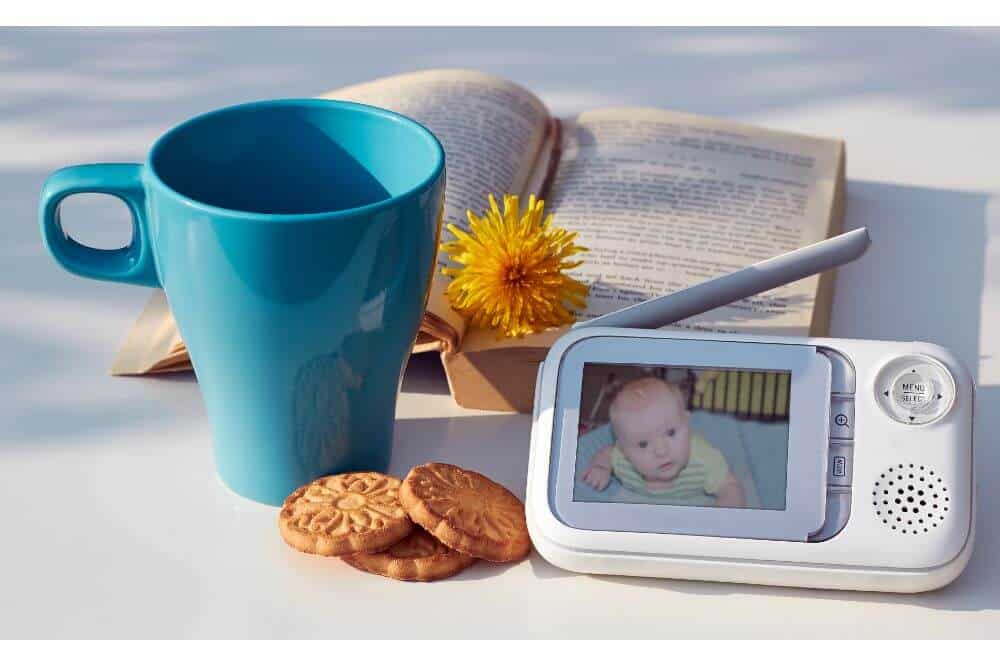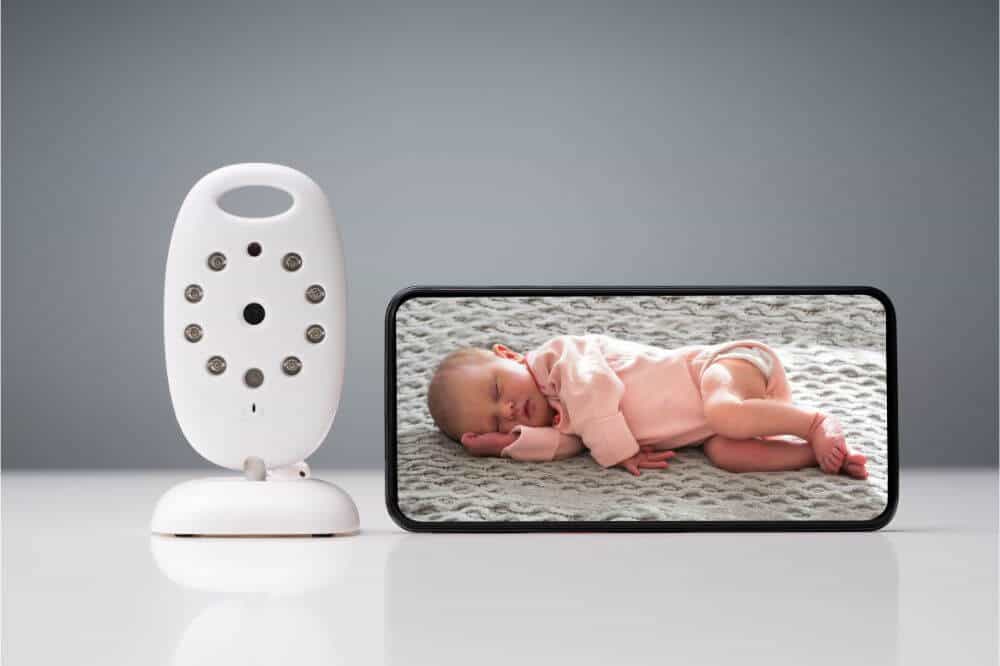If there is one thing that no parent should be without, it is a baby monitor. These aren’t just great for babies. They are ideal for keeping an eye on older children as well. Knowing that your children are safe is one of the biggest priorities in your life, and a baby monitor is a tool that will help you to have the peace of mind of knowing that your children are always safe.
One of the first things that you should set up in a new baby’s room is a baby monitor. That way, when you bring the new baby home, even when you aren’t in their room, you will always be able to see what is going on with them, and know if they need you or are in any kind of distress.
In the past, baby monitors only allowed parents to watch their babies in real-time. So, unless parents were right there in the house, they often did not see everything that was going on throughout the day when they were outside of the home.
Modern technology has made vast improvements to baby monitors, and now these devices can record videos that parents can watch at any time, and from anywhere thanks to Smartphone technology.
However, do baby monitors record video? Keep reading to learn more about using baby monitors to record what is going on in your baby’s room.
How do Baby Monitors Work?
Pretty much all baby monitors work with the same technology, which is made up of two components, a receiver and a transmitter. The transmitter is placed in the baby’s room, and the parent can take the receiver to other locations in the home.
The transmitter sends signals that are picked up by the receiver, so the parent or caregiver can keep an eye on the baby without having to be right in the same room.
There are many different types of baby monitors, and the signal each sends out depends on the type of monitor. These days, video monitors are becoming increasingly popular.
Not only are you able to watch what is going on, you will also be able to hear audio. So, if the baby cries, you will hear it even if you are in another part of your home (or even outside of the home).
Early baby monitors transmitted audio signals through radio waves. Today, baby monitors have not only video and audio, but also sensors that can monitor any movement in the room, including the baby’s breathing. In some cases, you will need an Internet connection to be able to use this type of technology.
Types of Baby Monitors
There are several different types of baby monitors. All of these monitors rely on three basic types of technology. You will find audio/analog baby monitors, video/digital baby monitors, and Wi-fi and Smartphone-based baby monitors.
Audio/Analog
The original baby monitors used audio/analog technology. Many parents still use these monitors, which operate with a transmitter, which is most often a microphone.
The microphone picks up the sounds in the room,a nd then sends them to a receive through radio waves which are high-frequency. This is to ensure that there is little to no interference from other frequencies.
There are now versions of these baby monitors that will search through various frequencies to find bands that are open and that can be used for the monitors with no radio interference. This concept was also used in the creation of baby monitors that use video.
Video/Digital
Today’s baby monitors are much more advanced than the earlier versions, and most use video/digital technology. These tend to have single transmitters and receivers, but the signals are transmitted differently than they are with the audio/analog baby monitors. In many cases, the transmitter is often a camera that has a microphone.
These monitors send signals through encrypted codes, and these codes are sent over many frequency bands in a pattern that is somewhat random. In fact, the pattern will be unique to one baby monitor, so others can’t pick up the signal as well. Obviously, video baby monitors are more expensive than audio monitors, but they have more range, and are well worth the added expense when it comes to protecting your baby.
Not only are these monitors great for your own peace of mind, they will also allow little ones to feel like you are right there in the room with them, because you will be able to talk to them through the monitor.
Many of these monitors also have some other great features, including pulse monitors, motion monitors, Pan/Tilt/Zoom functions, preset lullabies, white noise, night lights, night vision, infrared, and other low light options.

Wi-Fi and Smartphone Based
The Internet is a truly wonderful thing, for many reasons, including allowing you to have better technology for protecting your baby. These days, parents are able to monitor their babies no matter where they are. Even if they are travelling on the other side of the world, parents can check in to see what their babies are doing.
This type of monitor is ideal for working parents who want to be able to look in on their children at various times throughout the day. Wi-Fi based monitors transmit signals to a Wi-Fi router, and the signals are then sent to your tablet or smartphone in real-time (you do need to be connected to use this). Some baby monitors are even equipped with Voice Over Internet Protocol (VOIP), so you can even talk with your child through the monitor.
You can use these monitors to record everything that is being transmitted. This means that you can watch the videos later in order to check out your baby’s sleep patterns, to see if they are able to climb out of their crib, or even to make sure that they are being properly cared for by outside caregivers. You can store the videos on memory cards, your computer, or even in the cloud.
There are a couple of drawbacks to this type of baby monitor, even though it may sound like a blessing in disguise. If the signal isn’t good, there may be communication issues such as signal jams.
If the power goes out, you won’t be able to watch the live feed (unless of course you have a backup power source, such as a generator). They can also be hacked into, just like any other device that connects to the Internet.
Thankfully, there are other options available, which are not as susceptible to being hacked.
Are Baby Monitors Private?
Privacy is a huge concern for most parents, and it is important to understand just how much privacy one can have when they are using a baby monitor. Your privacy will greatly depend on the type of baby monitor that you ultimately choose.
While you may think that a digital monitor is the one that is most easily hacked, think again. Analog/audio baby monitors that broadcast on open channels can easily be hijacked by anyone who is using the same channels.
While it may seem that it would be easier to hack into a digital baby monitor, due to Frequency-Hopping Spread Spectrum (FHSS) technology. The signals from this type of monitor are encrypted, so only the transmitter and receiver know what is referred to as the “channel switching pattern”. This makes it quite difficult for others to be able to hack into the system.
The least secure type of baby monitor is the type that is Wi-Fi based. This is because they use Internet protocols that hackers can easily attack from any part of the world.
While they are not always successful, this is something that parents need to consider before choosing a baby monitor with video recording functions. Should you choose a Wi-Fi based baby monitor, make sure you choose a ver strong password to protect the connection in order to keep hackers at bay.
Conclusion
So, the answer to the question, “do baby monitors record video” is yes. In fact, most modern baby monitors do have some sort of video recording capability, because today’s parents must be more concerned about the safety of their children than ever before.
Most modern baby monitors are loaded with features that will allow you to leave the home with the knowledge that you can check on your baby at any time of the day or night, no matter where you are at any given time, and know that they are safe and sound.

